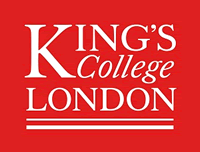Ultrasound elastography is an emerging non-invasive imaging technique for detecting alterations in mechanical properties of tissue [1]. Usually, ultrasound radiofrequency data are collected from tissue to first track displacements and then assess mechanical properties such as strain and elasticity. Thus, elastography is highly dependent on the quality of ultrasound data and images and the resulting strain or elasticity maps are affected by the same limitations as speckle tracking. Indeed, artefacts like shadows, reverberation, low resolution, and poor signal-to-noise-ratio (SNR) at large imaging depth prevent elastography images in practice [2]. All of these limitations are imposed by the way ultrasound operates using a small hand-held transducer.
Lateral displacements are more challenging to assess due to the limitations in lateral resolution, lack of phase information, and poor SNR. In practice only one displacement out of three is accurately estimated and one of nine components of the strain tensor. In addition, when 2D imaging is performed, out of plane motions can induce estimation artefacts. Tissue motion and deformation are not limited to a single dimension and most tissues exhibit anisotropic mechanical and functional properties. Potentially, a much more accurate estimation of displacements would be possible with a coherent-multi transducer approach, which leads to multi-view images with significant improvements in resolution and sensitivity [3, 4].
This project aims to develop and evaluate advanced quantitative ultrasound techniques to exploit the coherent use of multiple ultrasound transducers and improve both accuracy and precision in 2D/3D tracking estimates that will allow the calculation of the strain field and transform ultrasound elastography methods. A comprehensive framework for algorithm verification and validation will be built using ultrasound simulations and experimental data obtained in a controlled setup in phantoms and ex vivo animal tissue.
Applications are invited for fully funded 3,5 years full-time PhD studentship (including home tuition fees, annual stipend and consumables) starting on 1st June 2022.
Applicants are encouraged to contact the lead supervisor (Dr Laura Peralta) before applying - [Email Address Removed]
Further information on how to apply can be found here.

 Continue with Facebook
Continue with Facebook



